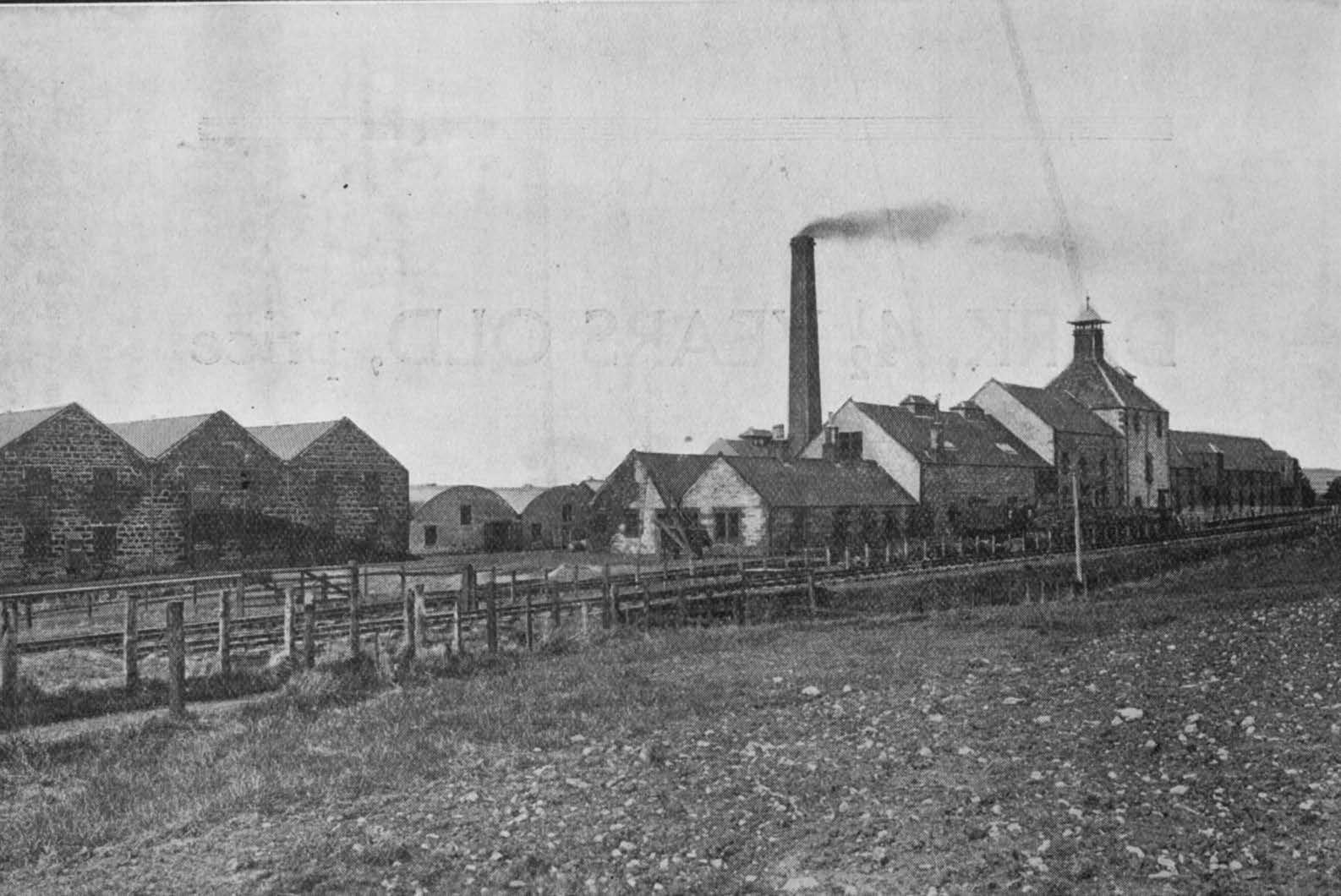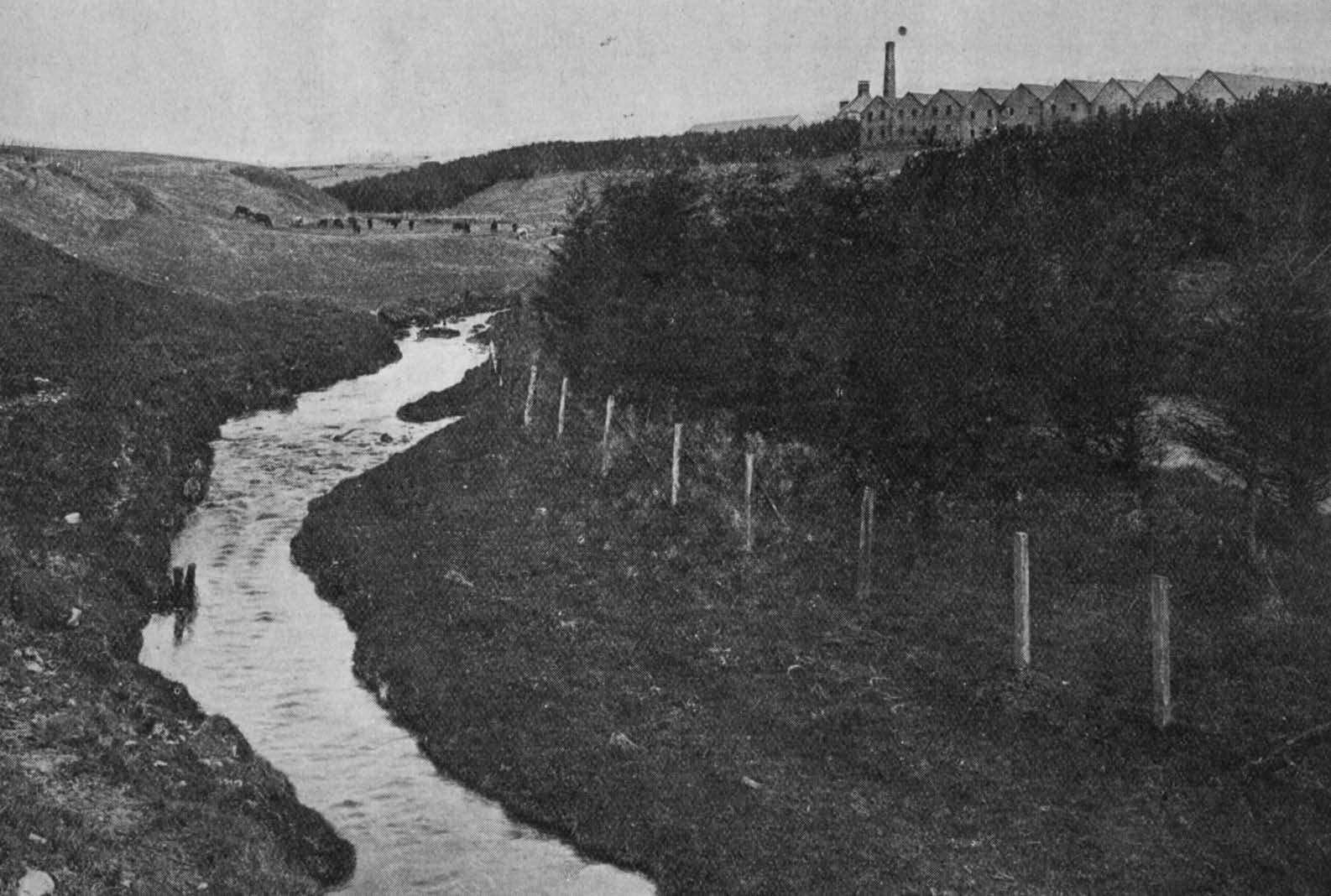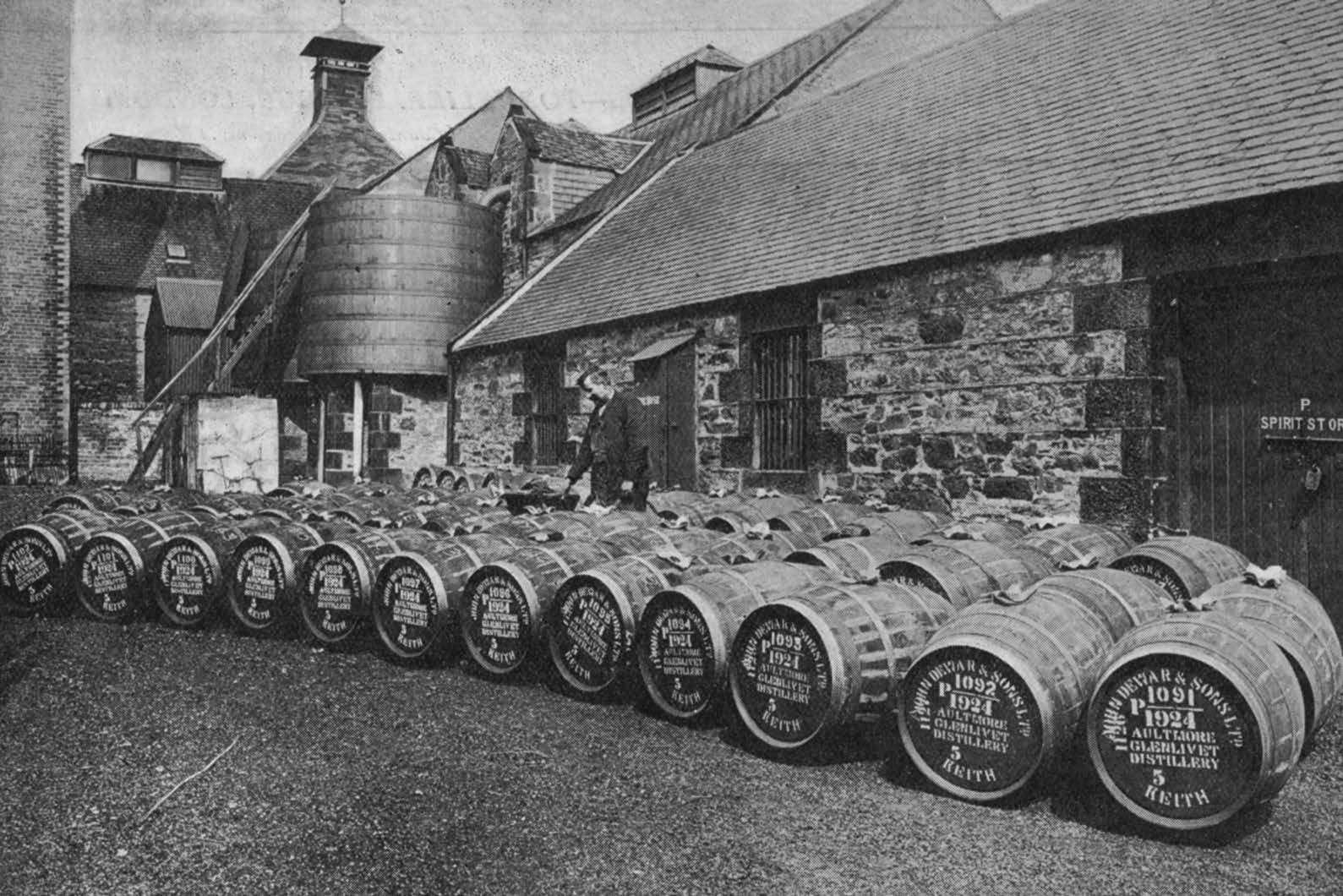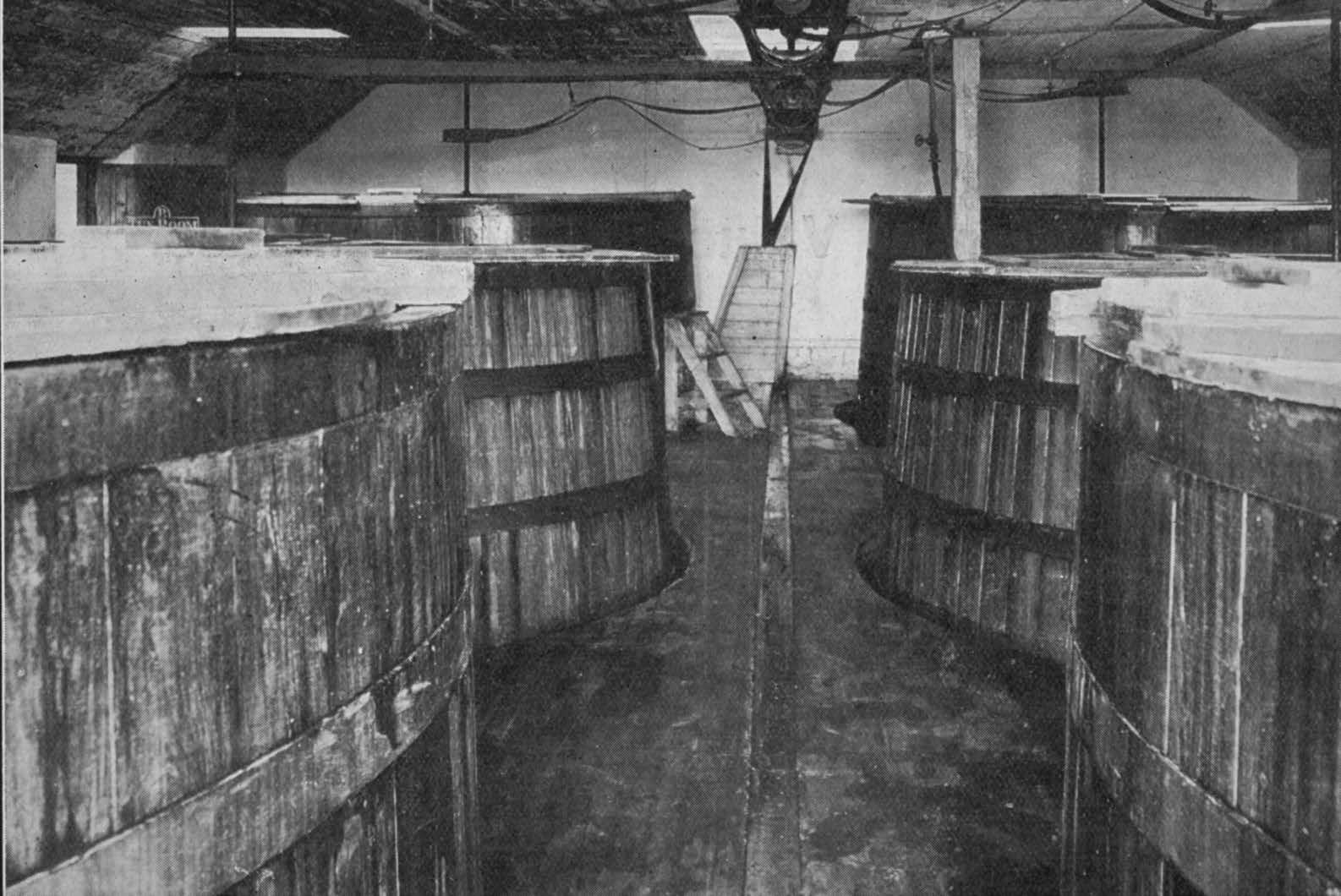LVIII
Aultmore Distillery, Near Keith.
September 14th, 1924
Aultmore, founded in the year 1897, is one of the many distilleries that sprang into existence in Banffshire and Morayshire towards the end of the nineteenth century. The distillery was in the hands of the Oban and Aultmore-Glenlivet Distilleries, Ltd., until last year, when it comes became the property of the famous firm of John Dewar and Sons, Ltd.
Aultmore Distillery lies about four miles from Keith – a town whose history can be traced back to the twelfth century, when its name was mentioned in a charter by King William the Lion. No very remarkable events are recorded in the history of the neighbourhood. On a hill named the “Card’s Hill” are faint traces of a Druidical stone circle. The word is probably derived from the Gaelic “carald,” meaning “a friend,” so that the true name of the hill is “The Hill of Friends,” originating from the brotherly Druids who worshipped on the summit.
Some five hundred years ago Keith was the most important town in Banffshire, with a “Court of Regality,” or Royal Assizes, empowered to deal with every crime committed in the country, including the four offences for which no bail was allowed: robbery, rape, murder and arson, curiously described as “The Four Please of the Crown.” The place of execution was a hill not far from the present site of Aultmore Distillery. For many years the town was famous for its fair, held in September, to which came merchants from many parts of Scotland. “Numbers of trading people and manufacturers from Glasgow, Perth and Dundee, and from other towns in the south were met at Keith by all the merchants in the western Highlands and northernly parts of the kingdom, from the distance even of Kirkwall and the Orkney Isles,” says an old chronicler. “Accompts were settled, and new commissions arranged at the fair, and brought to it were the whole manufacture of woollen cloths, and all the black cattle and horses, several thousands of each, from all the country far and wide around.”
It will be noticed that the old chronicler details what were evidently the staple industries of the countryside at the time he wrote, namely, cloth making and cattle breeding, but says nothing at all about Whisky, now the district’s most famous product.
Another ancient writer described Keith as being chiefly famous for “cold winds, spring-wells and road metal.” The town was certainly inconspicuous as a manufacturing centre at the time these sarcastic words were written, but if he had lived in the twentieth instead of the fifteenth century, the chronicler would doubtless have noted that Keith is now famous for Whisky quite capable of counteracting any “cold winds,” since there are now three first-class distilleries in the district besides Aultmore. The local Whisky trade has contributed largely in recent years to the growth of the newer part of the town, bringing, as it always does, a great deal of direct and indirect employment in its train.
Aultmore Distillery is conveniently placed beside the L.M. and S. Railway, by which consignments of coal and barley are brought into a large siding leased by the proprietors. Aberdeenshire barley is principally employed in the process of manufacture, and supplies are passed through a screening machine on arrival at the premises. For steeping the grain there are three vessels of forty quarters’ capacity. The kiln is of the usual wire-floored type, with a King’s patent regulator controlling the furnace, and grinding of malt is done by a two-roller mill supplied by Messrs. Day and Co., of Huntly. Malt storage is provided by a series of deposits with space for four hundred and fifty quarters.
Aultmore has a productive capacity rivalled by few distilleries in the North of Scotland. Seventeen hundred and fifty bushels of malt are mashed each week in a tun fitted with a sparger and a drag, which conveys draff into wagons in the railway siding. In the tun-room are eight wash-backs with switching apparatus. Conspicuously large is the wash-still of over five thousand gallons’ content, and the Spirit still can hold nearly four thousand gallons. The receiver room adjoining the still-house, with a safe manufactured by Messrs. Blair, Campbell and McLean, is a clean, well-equipped addition to this department. Settling tanks are installed outside the premises for treatment of the burned Ale and spent lees before these liquids pass in a purified state into a stream flowing near the distillery.
Like many other distilleries in the district, Aultmore is served by two strong sources of power – a water turbine and a steam engine – either being capable of driving the main malting and mashing machinery. Other prominent features noted during our visit were an unusually large cask store, and warehouses holding a stock of 750,000 gallons of Whisky in bond.
Images © The British Library Board





